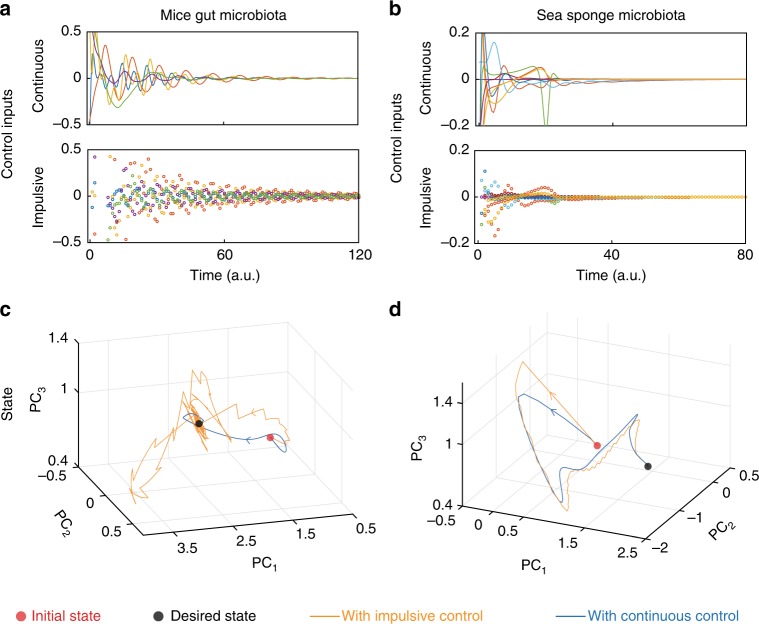Fig. 6.
Controlling host-associated microbial communities. The controlled population dynamics of both microbial communities were simulated using the controlled GLV equations (see Supplementary Note 7 for details). The intrinsic growth rates were adjusted such that the community has an initial “diseased” equilibrium state x0 in which one species (C. difficile for the mice gut microbiota) is overabundant compared to the rest of species. We chose the desired state xd as another equilibrium with a more balanced abundance profile. For each microbial community, we used the minimum set of driver species identified in Fig. 3. a, b Control inputs obtained using the linear MPC for the impulsive and continuous control schemes. c, d Projection of the high-dimensional abundance profiles (states of the microbial communities) into their first three principal components (PCs). See Supplementary Figure 1 for the temporal response of each species. The calculated control strategies applied to the driver species succeed in driving the community to the desired state, using either continuous or impulsive control

